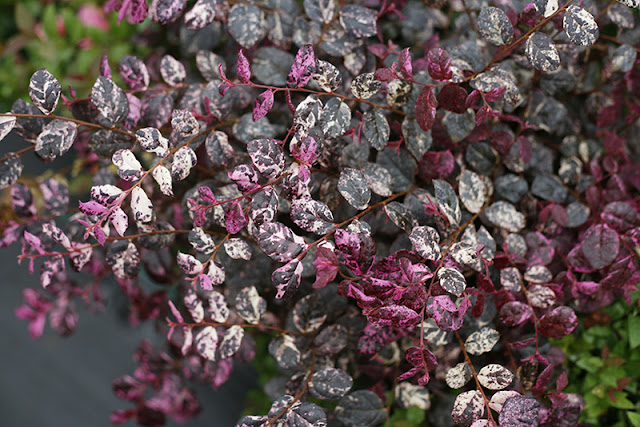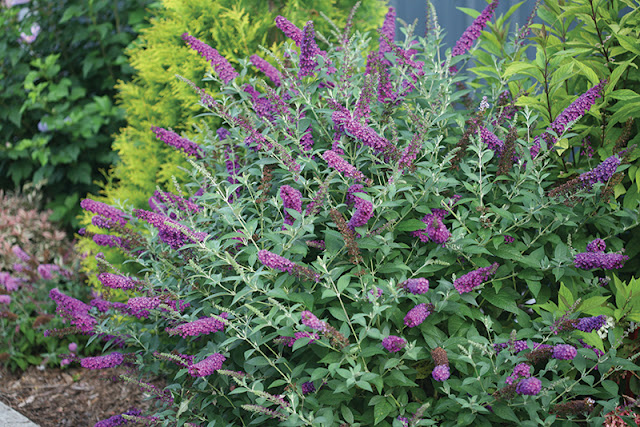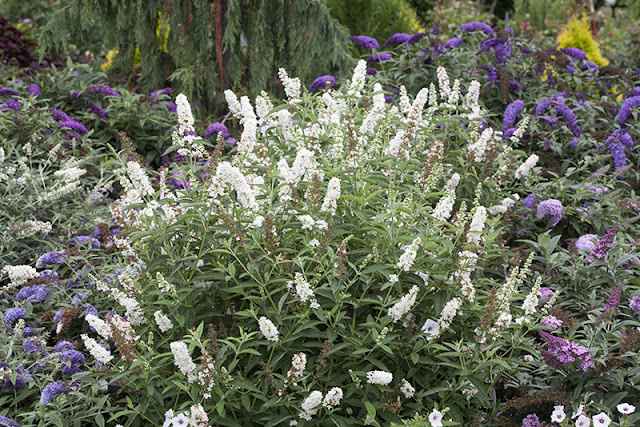August is when you notice things that you otherwise overlook. Like graham crackers. If you don't have a preschooler in the house you probably don't buy them regularly. But when August rolls around and you realize that s'more season is drawing to a close, you go on a mission to the cookie aisle.
Clethra (summersweet) is kind of like that, too. Not being a super showy plant in spring, it can be overlooked by the casual garden center shopper. That's too bad, because the fragrance of Clethra flowers is as sweet and enjoyable as the most perfect campfire s'more.
Clethra (summersweet) is kind of like that, too. Not being a super showy plant in spring, it can be overlooked by the casual garden center shopper. That's too bad, because the fragrance of Clethra flowers is as sweet and enjoyable as the most perfect campfire s'more.
 |
| Sugartina® 'Crystalina' summersweet |
Sugartina® 'Crystalina' Clethra alnifolia is an improved 'Hummingbird' with a consistent, dense habit and dark green foliage. It's a tidy little mound that fits nicely into most landscapes without needing pruning.
While Sugartina® 'Crystalina' has lots of fragrant white summer flowers, if you want something even showier check out Vanilla Spice®. It has huge blooms whose flowers are roughly double the size of typical Clethra flowers.
Sugartina® 'Crystalina' Clethra grows 2.5-3' tall and wide and makes a great mass planting or groundcover. At 3-6' tall, Vanilla Spice® Clethra is better as a hedge than a groundcover, although either can be tucked into the landscape as a specimen or small group. Both are hardy to USDA Zone 4 and will grow in full sun or partial shade.
I was happy to see lots of Clethra when I visited the Boston area earlier this summer. Landscape designers know the value of this native plant: it's hardy, and tolerates clay soil, wet soil, shade - just about anything you throw at it. That makes it tremendously useful for purpose-driven landscapes like rain gardens or naturalized areas. But the compact varieties hold their own for gardens planted solely for aesthetic reasons. Seriously, who wouldn't want a mound of showy, fragrant flowers in summer? Your butterfly friends will enjoy it as much as you do.
While Sugartina® 'Crystalina' has lots of fragrant white summer flowers, if you want something even showier check out Vanilla Spice®. It has huge blooms whose flowers are roughly double the size of typical Clethra flowers.
 |
| The blooms of Vanilla Spice summersweet are double the typical size. |
I was happy to see lots of Clethra when I visited the Boston area earlier this summer. Landscape designers know the value of this native plant: it's hardy, and tolerates clay soil, wet soil, shade - just about anything you throw at it. That makes it tremendously useful for purpose-driven landscapes like rain gardens or naturalized areas. But the compact varieties hold their own for gardens planted solely for aesthetic reasons. Seriously, who wouldn't want a mound of showy, fragrant flowers in summer? Your butterfly friends will enjoy it as much as you do.
Plant of the Week is written by Jane Beggs-Joles














